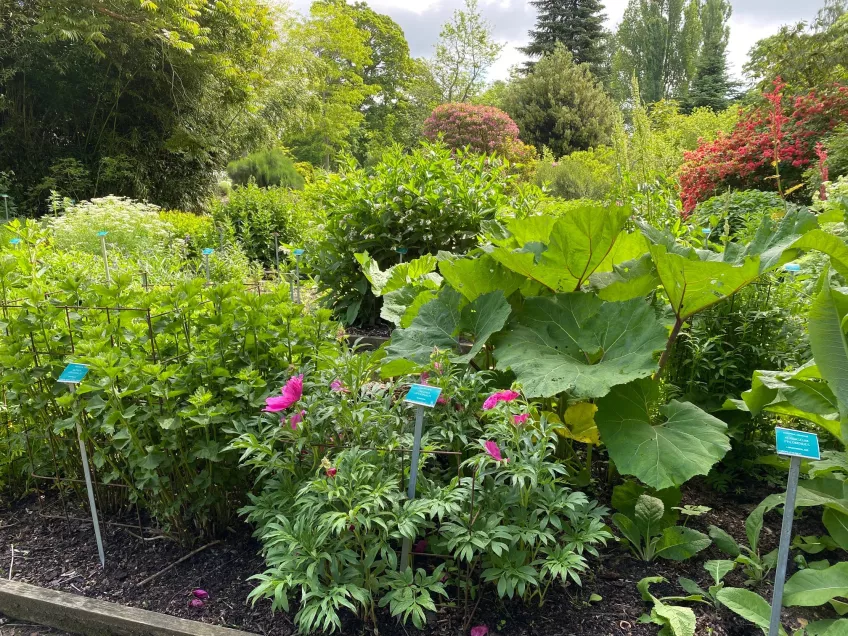Spice and Medicinal Garden
In this part of the garden you can find herbs that have been used by humans for a long time. Deadly poisonous plants, witchcraft plants and daily culinary herbs are grown side by side. But also current medicinal plants and plants that have traditionally been used to cure various symptoms and diseases.
In the past, all medicines had a natural origin. Many of the plants bear the specific name officinalis or officinarum, which tells us that they are medicinal plants used in the apothecaries. Examples are common peony Paeonia officinalis, marsh mallow Althaea officinalis and common mandrake Mandragora officinarum.
About 40% of all prescription drugs still derive from plants, although most are synthetically produced today. This allows for better control of the amount of active substances. For example, Digoxin, which is used in the treatment of heart failure and irregular heart rhythm, was first extracted from foxglove (Digitalis purpurea). Pain-relieving morphine, on the other hand, is still produced directly from the opium poppy (Papaver somniferum).
Among the medicinal plants are plants that were used according to the doctrine of signature. According to this doctrine, herbs resembling various parts of the body can be used to treat ailments of those body parts. The yellow plant juice of greater celandine (Chelidonium majus) would therefore be a good remedy for jaundice. Likewise, the spotted leaves of lungwort (Pulmonaria officinalis), reminiscent of a lung, was said to cure lung diseases.
Feel free to touch and smell, but don't taste the plants!

Common mandrake
Common mandrake, Mandragora officinarum, has a long history related to magic and witchcraft but also of medicinal use. Its large root is humanlike and was believed to be a living being. It could be worn as an amulet to protect against sorcery and evil forces. But when pulled up, the shrieks of the mandrake root would kill anyone hearing it.
The mandrake plays a part in the stories about Harry Potter by JK Rowling. The students have to wear hearing protection when replanting the mandrake.
The root contains various poisonous alkaloids with strong physiological effects. Mandrake has been used both as a pain reliever and as an aphrodisiac. Mandrake belongs to the nightshade family (Solanaceae) and originally comes from the Mediterranean area.



